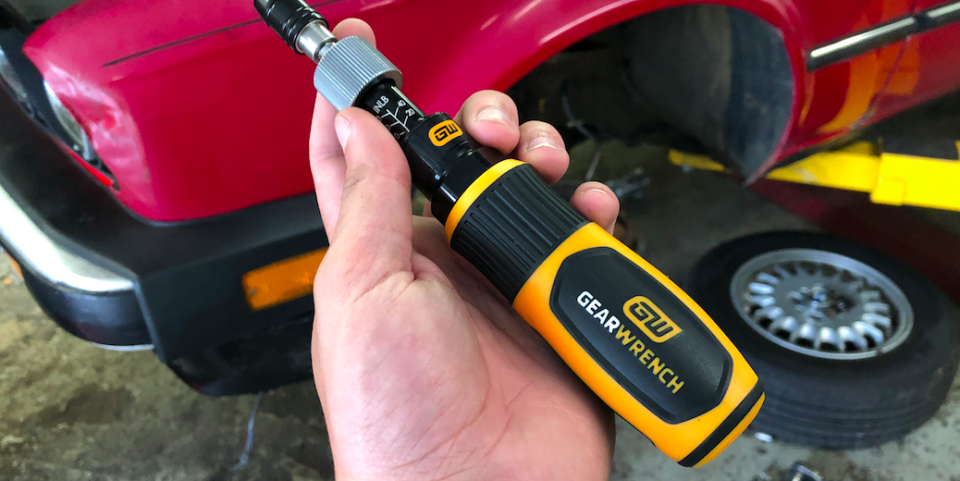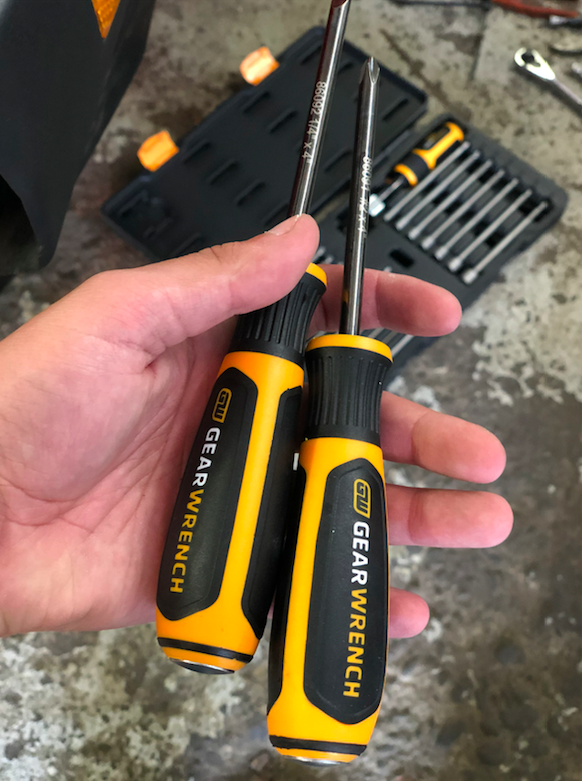Impact and Torque Screwdrivers Are Must-Have Tools For Wrenching on Cars

"Hearst Magazines and Yahoo may earn commission or revenue on some items through the links below."
I hate Phillips-head screws. I can’t help but wince whenever I’m faced with extracting one from any of my rusty and dilapidated project cars. Depending on where they’re located, I already know there’s a good chance I’ll strip one and spend hours trying to extract it before giving up and having to drill it out. That’s why I’ll always keep an impact screwdriver close by from now on.
While most impact screwdrivers look like normal screwdrivers on the outside, they feature a mechanism with a spring and rotational cam inside the handle. You use them by placing the tip on the screw you want to extract, just like it’s any other screwdriver. But instead of turning it using the torque from your hand, you smack the base of the impact screwdriver’s handle with a hammer. This is satisfying and fulfilling. But more importantly, the strike forces the shaft of the screwdriver to rotate counterclockwise, usually around 12 degrees, while also delivering downward force to the screw/screwdriver interface to ensure the head doesn’t slip and strip the screw’s teeth.
Here’s a neat video explainer if you want to learn more:
Having an impact screwdriver on hand could mean the difference between hours of frustration and a few minutes of work. Before I had one around, I dreaded extracting screws that had been subjected to years of rusty winters, because no normal screwdriver would be able to grip the head of a Phillips screw without stripping it. I’d just end up hammering in a torx bit, attaching it to an impact gun, and praying. If that didn’t work, I’d break out the drill. But now, rusty Phillips and flathead screws are just minor annoyances. A few taps with an impact screwdriver and they pop right out, no awkward twisting or panicked shearing necessary.

If you’re the type of person who likes to think ahead, you’re going to want to make sure you don’t strip or overtighten your fasteners while putting them back in place, lest you repeat everything above the next time you have to remove it. And there’s a tool for that, as well: Instead of merely using your hand to snugly tighten a screw, you can use a torque screwdriver.
A torque screwdriver, like a torque wrench, allows you to set a torque number and then clicks once that amount of torque is reached, therefore ensuring the appropriate amount of twist is applied to whatever you’re reinstalling. This one, supplied by Gearwrench, is a driver with changeable heads that can be used to torque nuts, bolts, and screws.
Torque screwdrivers are especially helpful in tight spaces where fitting a torque wrench might not be possible. They don’t require a lot of space to rotate, and because the attachments are long and thin, they can squeeze into even the tightest spots. It takes the guesswork out and provides some assurance that installed bolts or screws will neither back out nor strip the next time they’re removed.
You Might Also Like

 Yahoo Finance
Yahoo Finance 